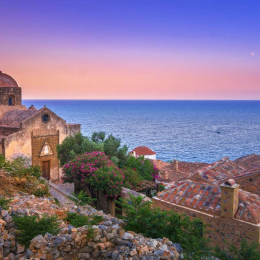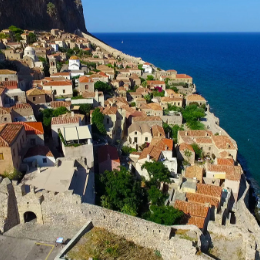In celebration of International Museum Day on Saturday, May 18, 2024, it is worth highlighting the recent revival of efforts to showcase the archaeological treasure of Pavlopetri. In April 2024, the “Pavlopetri” agenda resurfaced, spearheaded by the Deputy Mayor of Tourism, Mrs. Maria Aroni, following her visit to Switzerland. This unique event, focusing on Elafonisos and the submerged city in the island’s crystal-clear waters, was organized by the "Cultural Circle of Friends of Greece in Switzerland," with former President Mrs. Katerina Valli-Savvidi and current President Dr. Katerina Boutsiaka.
The Greeks of Elafonisos, in collaboration with Greeks abroad, are joining forces to promote, highlight, and protect the archaeological treasure of Pavlopetri. The newly elected Municipality of Elafonisos, with Mayor Mr. Angelos Tsirigotakis and Deputy Mayor of Tourism Mrs. Maria Aroni, are actively participating in the cultural management of this archaeological site. Through their efforts, they aim to bridge the past and future of the region, redefining the touristic character of Elafonisos, which is globally renowned for its crystal-clear waters.
The islet of Pavlopetri, opposite Elafonisos in Laconia, has garnered global interest due to its archaeological richness. In the waters between the islet and the mainland lies the ancient city, submerged just a few meters below the surface, dating back approximately 5,000 years. The city, unique in its kind, has a specific layout with streets, buildings, and a cemetery. It was discovered in 1967 by Nicholas Flemming and mapped in 1968 by a team from the University of Cambridge. There are at least 15 buildings at a depth of 3 to 4 meters, and recent surveys in 2009 revealed that it extends over 9 hectares.
Initially, it was estimated that the city was built around 1600-1100 BC, but later research revealed that the city was inhabited before 2800 BC, at the beginning of the Bronze Age. It is believed that the city submerged around 1000 BC. Despite natural water damage over the centuries, the city’s layout remains as it was thousands of years ago. The 2009 survey significantly aided in mapping the city, which is the first submerged city to be digitally recreated in three dimensions.
Sonar mapping, using techniques developed for military purposes and oil exploration, supported recent research. The area was found to have a textile center and many large jars from Crete, indicating that the city was also a major trading port. All these findings are vividly depicted in the BBC documentary of 2011, which showcased Pavlopetri, the “city beneath the waves,” in a three-dimensional representation.









